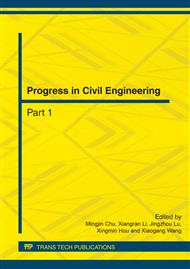p.2437
p.2441
p.2448
p.2454
p.2458
p.2464
p.2468
p.2474
p.2478
Large Eddy Simulation of Gas-Liquid Two-Phase Flow for a Nested Type Fixed-Cone Valve
Abstract:
large eddy simulation cooperated with a physical fractional-step method is applied to simulate steady flow around a nested type fixed-cone valve; and the equations are solved with the finite volume method. The free fluid surface is simulated by the VOF method. The pressure contours and vorticity magnitude are obtained. The modeling results conform to physical law, and show that the large eddy simulation theory has powerful capacity in simulation of microstructures of turbulent flows, and the function of the nested type fixed-cone valve for energy dissipating is good.
Info:
Periodical:
Pages:
2458-2463
Citation:
Online since:
May 2012
Price:
Сopyright:
© 2012 Trans Tech Publications Ltd. All Rights Reserved
Share:
Citation:


